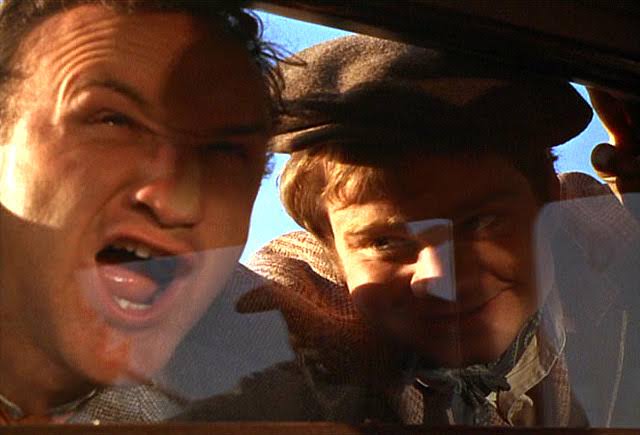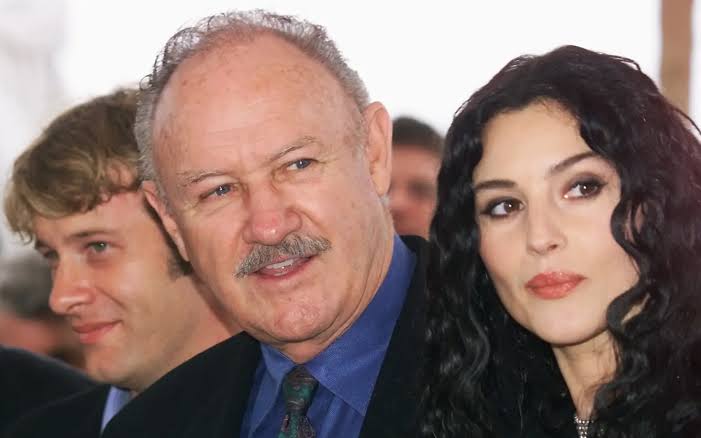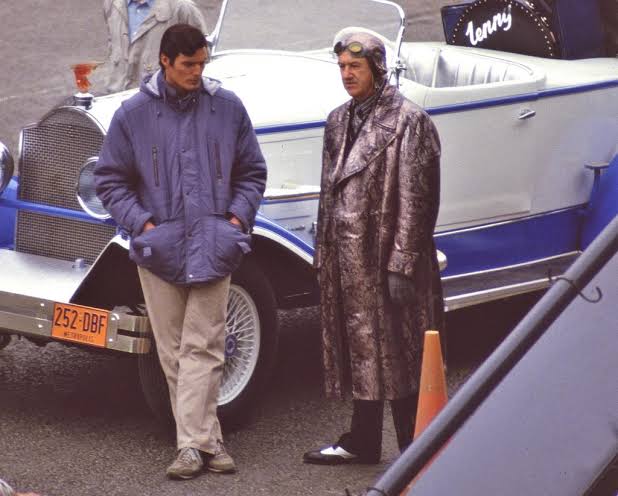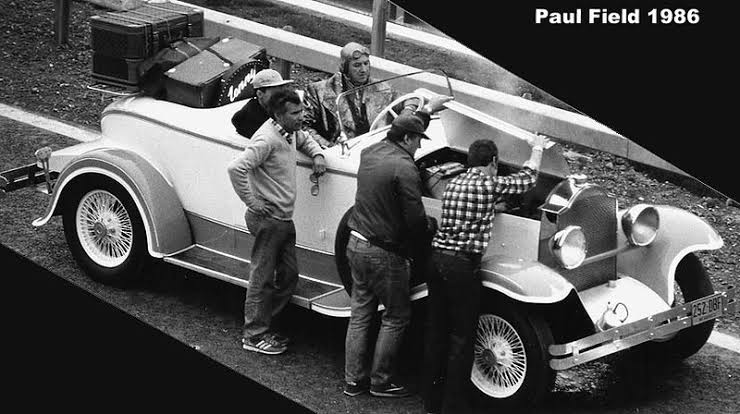The sudden and puzzling deaths of Hollywood legend Gene Hackman and his wife, Betsy Arakawa, have left the film industry and true crime enthusiasts alike grappling with unanswered questions. Found in their Santa Fe residence on February 26, the 95-year-old actor and his 65-year-old spouse were discovered under baffling circumstances that have sparked a flurry of investigations and heated debates. With Hackman’s body located in the mudroom—his cane and sunglasses nearby—and Arakawa found on the bathroom floor amid scattered prescription pills, the scene has prompted experts to propose several theories about what might have transpired in the final days of their lives.

Investigators have already pieced together some initial clues. Gene Hackman’s pacemaker, for instance, last recorded activity on February 17, suggesting he had been dead for at least nine days by the time maintenance workers uncovered the tragic scene. The exact time of Betsy Arakawa’s passing remains uncertain, as do the circumstances surrounding the deaths of the couple’s pets, with one dog found deceased in a kennel while the others survived.
With toxicology results pending and autopsy reports yet to be released, three primary theories have emerged, each put forth by respected crime scene experts and forensic analysts. Below, we examine these theories in detail while integrating key search terms and insights from leading investigative professionals.
Theory 1: A Sudden Medical Crisis Leading to a Tragic Accident
One prevailing theory suggests that a sudden medical emergency may have set off a catastrophic chain of events. Forensic engineer Mike Sutton has proposed that Betsy Arakawa, reportedly the primary caregiver in their household, may have suffered a severe medical crisis—possibly an overdose or an untreated condition—that incapacitated her. With Arakawa suddenly unable to perform her caregiving duties, Gene Hackman, who relied on her for daily assistance and medication management, might have been left helpless.

In this scenario, Hackman’s fall, possibly due to a fatal heart attack or complications from a malfunctioning pacemaker, could have been the critical turning point. His collapse in the mudroom—evidenced by the presence of his cane and sunglasses—suggests he might have tried to summon help before succumbing to his condition. Meanwhile, the scene in the bathroom, where prescription pills were scattered near Arakawa’s body, hints at a possible self-medication attempt or an accidental overdose.
Key search phrases like “Gene Hackman sudden death,” “medical emergency actor,” and “Hollywood accident mystery” have driven online discussions about whether a natural health crisis might be responsible for the tragic events. Sutton emphasizes that further forensic analysis, including toxicology and autopsy reports, is essential in determining if the deaths occurred simultaneously or were separated by hours or even days. The forensic details emerging from this theory continue to fuel speculation about whether a simple medical emergency could evolve into a larger tragedy when compounded by the challenges of aging and chronic health issues.
Theory 2: Distress and Despair – A Suicide Following a Fatal Discovery
Another compelling theory, brought forward by legal analyst Paul Mauro, revolves around the psychological impact of witnessing a loved one’s death. Mauro speculates that Betsy Arakawa may have taken her own life after discovering Hackman’s lifeless body. In this theory, the emotional shock of finding her husband unresponsive could have overwhelmed Arakawa, driving her to ingest a potentially fatal combination of prescription pills and alcohol.

The details of the scene—Hackman’s body in the mudroom and Arakawa’s in the bathroom—lend credence to the idea of a distressed reaction. Mauro, a former NYPD officer with extensive experience in criminal investigations, suggests that the couple’s $3 million Santa Fe home, equipped with modern security features like motion sensors and doorbell cameras, might eventually yield crucial digital evidence. This surveillance footage, along with data from their phones and computers, could offer critical insights into their final hours, providing context for the abrupt transition from everyday life to tragedy.
Keywords such as “Gene Hackman suicide theory,” “Betsy Arakawa distress,” “Hollywood actor death mystery,” and “crime scene investigation” have become common in online queries as experts and fans alike debate the possibility of a suicide fueled by grief. Mauro notes that traditional investigative measures—examining tire marks, footprints, and interviewing neighbors and maintenance workers—are indispensable in piecing together the events that led up to the deaths. The theory of a distressed suicide following the fatal discovery not only resonates with the heart-wrenching narrative but also aligns with the broader discussions about mental health and the pressures faced by those in the public eye.
Theory 3: Two Separate Medical Emergencies Occurring Simultaneously
A third perspective comes from renowned forensic pathologist Dr. Michael Baden, who suggests that the deaths of Gene Hackman and Betsy Arakawa might be attributable to independent medical emergencies that coincidentally occurred around the same time. According to Baden, the absence of external trauma on both bodies indicates that natural causes—rather than foul play—are the likely culprits.

Dr. Baden proposes that Gene Hackman may have suffered a fatal cardiac event, possibly exacerbated by a pacemaker malfunction, leading to his collapse. As for Betsy Arakawa, she might have experienced her own distinct medical crisis, such as a brain bleed or acute heart failure, which ultimately resulted in her collapse in the bathroom. This dual-crisis theory is supported by the lack of visible injuries and the positioning of the bodies, which suggests that neither of them endured an external assault or violent altercation.
The death of one of the family’s dogs, found in a kennel, adds another layer to the mystery. It is possible that in the ensuing days of neglect following the owners’ incapacitation, the animal succumbed to the harsh conditions. This aspect of the case has sparked additional interest, with online searches for “Gene Hackman dog death,” “Hollywood pet tragedy,” and “separate medical emergencies” joining the broader conversation.
Dr. Baden’s assessment highlights the need for comprehensive toxicology tests and autopsy reports to determine if underlying health conditions or pre-existing medical issues contributed to the tragic outcome. This theory not only raises critical questions about the vulnerability of elderly individuals facing multiple health challenges but also prompts broader discussions about healthcare, caregiving responsibilities, and the potential hazards of relying on medical devices like pacemakers.
The Role of Forensic Evidence and Pending Toxicology
Regardless of which theory eventually holds up to scrutiny, one common thread running through all the analyses is the significance of forensic evidence. Toxicology results, autopsy reports, and digital data from security systems and personal devices are eagerly awaited by both investigators and the public. These pieces of evidence are expected to offer crucial insights into the precise timeline of events, the potential presence of toxic substances, and any underlying medical conditions that may have played a role in the deaths of Gene Hackman and Betsy Arakawa.

Local law enforcement officials have already ruled out carbon monoxide poisoning as a cause of death—a finding that further deepens the mystery. In a statement released by investigators, the negative tests for carbon monoxide have directed attention toward other potential explanations, including natural medical emergencies, accidental overdose, and even possible self-harm.
Search terms like “toxicology report Gene Hackman,” “autopsy results Hollywood mystery,” and “forensic evidence Hackman death” continue to dominate online discussions. These keywords underscore the public’s desperate need for clarity in a case where every detail matters, and where the final conclusions may have significant implications for our understanding of aging, health, and the complexities of living with chronic medical issues.
Public Reaction and the Impact on Hollywood
The mysterious circumstances surrounding Gene Hackman’s death have reverberated far beyond the confines of Santa Fe. As one of Hollywood’s most respected and enigmatic actors, Hackman’s passing has prompted an outpouring of grief and speculation from fans, colleagues, and industry insiders. Social media platforms are rife with discussions that incorporate keywords such as “Gene Hackman conspiracy,” “Hollywood legend mystery,” “celebrity death theories,” and “Betsy Arakawa tribute.”
Many admirers of Hackman are now questioning how an individual who once graced the silver screen with stoic brilliance could meet such an ambiguous end. The blend of forensic evidence, expert theories, and unanswered questions has created a narrative that is as intriguing as it is sorrowful. Forensic experts and crime scene investigators, including Mike Sutton, Paul Mauro, and Dr. Michael Baden, have become central figures in these discussions, each contributing their unique perspectives on what might have unfolded in that fateful Santa Fe home.

This case has also ignited debates about the broader issues of elderly care, the reliability of medical devices, and the mental health challenges that can accompany aging. Conversations are increasingly framed around topics like “elderly medical emergencies,” “caregiver stress in Hollywood,” and “the dangers of prescription medication,” ensuring that the legacy of Gene Hackman will be remembered not only for his cinematic achievements but also for the critical questions his death raises about health and wellbeing in later life.
Conclusion: Awaiting the Final Verdict
At this juncture, the mystery surrounding Gene Hackman and Betsy Arakawa’s deaths remains unresolved. Whether it was a sudden, cascading medical crisis, a heart-wrenching act of despair, or two independent medical emergencies occurring in tandem, the truth is likely to emerge only after a meticulous review of toxicology and autopsy reports. In the meantime, experts continue to analyze every shred of evidence, and the public remains captivated by a case that challenges our assumptions about aging, caregiving, and the nature of celebrity.
The keywords that dominate online searches—such as “Gene Hackman death theory,” “Betsy Arakawa overdose,” “Hollywood crime scene investigation,” and “forensic expert analysis”—reflect a broader desire for understanding in the face of tragedy. As more details emerge, the hope is that the final verdict will not only bring closure to the families and friends of Gene Hackman and Betsy Arakawa but will also shed light on the vulnerabilities that affect us all as we age.
In the world of Hollywood, where public personas often mask private struggles, the untimely and mysterious passing of Gene Hackman serves as a stark reminder that even legends are not immune to the unpredictable forces of fate. Until investigators release their full findings, the three theories presented by experts like Mike Sutton, Paul Mauro, and Dr. Michael Baden will continue to fuel debate and speculation. Ultimately, what really happened to Gene Hackman may remain one of Hollywood’s most enigmatic mysteries—a story that intertwines brilliance, vulnerability, and the harsh realities of life.
The ongoing investigation into this case promises to be as compelling as any film script, with each new piece of evidence potentially rewriting our understanding of the events in that Santa Fe home. For now, as the public searches for answers using phrases like “Hollywood mystery actor death,” “Gene Hackman autopsy update,” and “crime scene experts discuss actor death,” the legacy of Gene Hackman endures—a legacy defined not only by cinematic achievements but also by the enduring quest for truth in the face of an unsolved enigma.











One thought on “What Really Happened To Gene Hackman? Exploring Three Compelling Theories Behind the Hollywood Icon’s Mysterious Death”